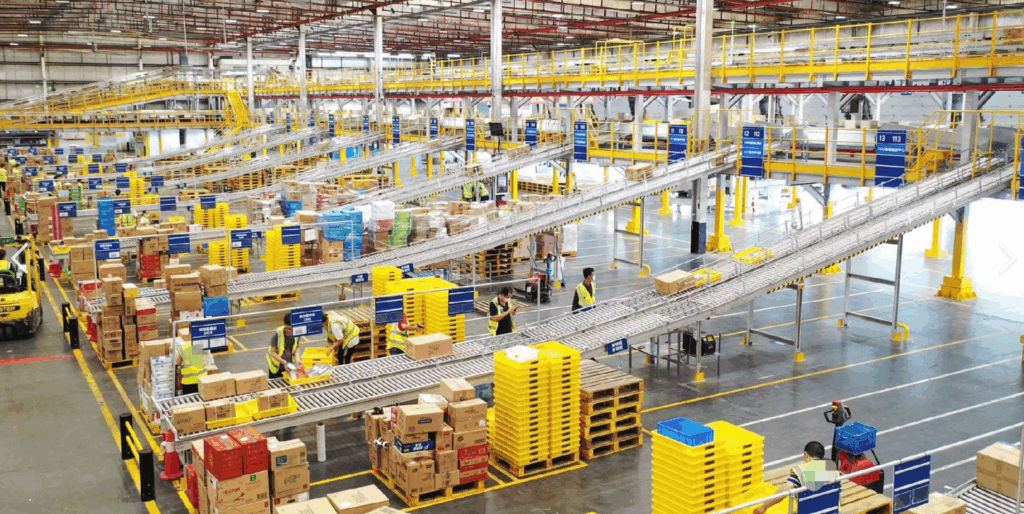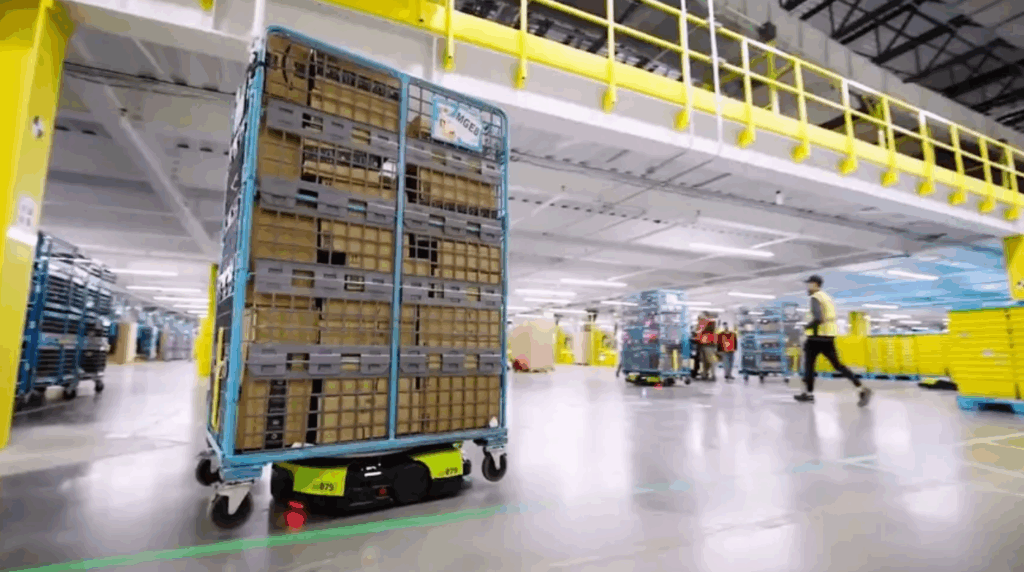In an era of business dominated by consumer demands, every link in the supply chain faces the stringent “both/and” tests—requiring faster delivery speeds while offering a richer variety of products; demanding lower operational costs alongside higher safety standards. With years of dedication to the industrial automation sector, WIT-SKILL has pioneered a breakthrough solution for modern supply chains, centered on hybrid palletizing automation technology.
From “Passive Response” to “Active Breakthrough”: A Revolution in Supply Chain Pain Points

The pain points of modern supply chains have long transcended efficiency issues in a single link, evolving into interconnected, cascading challenges. Consumers’ expectations for “next-day delivery” and “same-day delivery” have forced enterprises to push order fulfillment timelines to the limit. The explosive growth of SKUs—exceeding 15% annually in the food and beverage industry—has reduced the margin for error in traditional manual palletizing to near zero. Meanwhile, rising labor costs and persistently high transportation expenses directly erode corporate profits.
WIT-SKILL’s hybrid palletizing automation system transforms these pain points into growth opportunities through a model of “intelligent algorithms + hardware synergy.” For instance, in the distribution center of a large supermarket chain, the system reduced order processing cycles from 48 hours to 12 hours, increased daily SKU handling capacity from 500 to 1,200, and cut labor input by 60%. This is not merely an efficiency improvement but a paradigm shift in the supply chain—from “passively meeting demands” to “proactively creating value.”
Nine Core Advantages: Decoding the Automation Magic of Hybrid Palletizing
WIT-SKILL’s hybrid palletizing system reshapes supply chains by implementing nine core technological advantages, each directly addressing industry pain points:
-
Balancing Speed and Flexibility: The system achieves high-speed palletizing of 1,200 boxes per hour and can switch from beverage crates to snack boxes within 10 minutes without manual reconfiguration. This “high-speed + flexibility” feature perfectly adapts to pulse-like order scenarios such as e-commerce promotions.
-
Dual Assurance of Safety and Compliance: Replacing manual handling with robotic arms reduces heavy lifting-related injury risks by 98%. For food industry hygiene requirements, the system uses food-grade lubricants and dust-proof designs, complying with FDA certifications and HACCP standards.
-
Maximizing Space Utilization: Intelligent stacking algorithms dynamically adjust stacking patterns based on carton dimensions, increasing pallet space utilization from 70% (manual) to 92%. A beer manufacturer saw a 35% increase in per-vehicle load and a 28% reduction in per-box transportation costs after implementation.
-
Optimizing Cost Structures: Beyond direct labor savings, precise operations reduce cargo damage rates from 3% to 0.1%. A wine distributor thus reduced annual losses by over 500,000 RMB.
-
Seamless Scalability: Modular design allows expansion from single-robot to multi-robot collaboration, with processing capacity scaling linearly with business growth, avoiding redundant investments.
-
Error-Free Intelligent Verification: Dual validation via 3D vision + barcode recognition ensures accurate positioning and quantity of each box, achieving 99.99% order accuracy.
-
Integrated End-to-End Efficiency: Real-time integration with WMS systems enables pre-emptive order information acquisition, realizing “palletizing upon arrival” and increasing warehouse turnover efficiency by 40%.
-
Multi-Scenario Adaptability: The system automatically adjusts gripping strategies for items ranging from 10kg snack packages to 50kg liquid barrels, compatible with 12 packaging types including cartons, sacks, and turnover boxes.
-
Rapid Inventory Turnover Response: In the fresh produce industry, dynamic “palletizing-while-shipment” reduces inventory turnover days from 21 to 14, cutting cold chain energy consumption by 30%.
Industry-Specific Solutions: Precise Matching from Demand to Implementation

Supply chain characteristics vary significantly across industries. Visheer Intelligence tailors hybrid palletizing technology to specific scenarios:
-
Food and Beverage: Integrating temperature and humidity sensors, the system automatically identifies and rejects abnormal goods during palletizing, addressing perishability and temperature control needs. A dairy enterprise reduced in-shelf-life losses by 65%.
-
Retail and Wholesale: To handle massive SKUs, the system’s AI learning function memorizes over 1,000 packaging types. New SKUs require no programming—just 3 demonstrations for autonomous recognition—slashing maintenance costs.
-
Manufacturing Supply Chains: For heavy-part packaging, 重载夹具 and anti-drop designs ensure stable stacking of boxes over 50kg. An auto parts manufacturer thus reduced transportation damage complaints by 80%.
Toward Supply Chain 4.0: WIT-SKILL’s Automation Ecosystem

Hybrid palletizing automation is not an isolated technology but a core component of Visheer Intelligence’s “perception-decision-execution” supply chain ecosystem. Through synergy between 3D vision systems (“eyes”), robots (“arms”), and algorithms (“brain”), it achieves a closed-loop process from order receipt and intelligent planning to automatic palletizing.
A regional supermarket chain’s practice demonstrates this ecosystem’s value: after adopting Visheer’s system, its distribution center tripled labor efficiency, shortened order fulfillment from 48 to 12 hours, and increased customer repurchase rates by 15%. This embodies the ultimate significance of hybrid palletizing automation—not just optimizing a single link, but transforming the entire supply chain into a competitive advantage.
When every action in the supply chain is precise, efficient, and controllable, enterprises can navigate the fast-changing market with confidence. WIT-SKILL’s hybrid palletizing automation technology drives modern supply chains from “adequate” to “excellent” through tangible efficiency gains and cost savings.